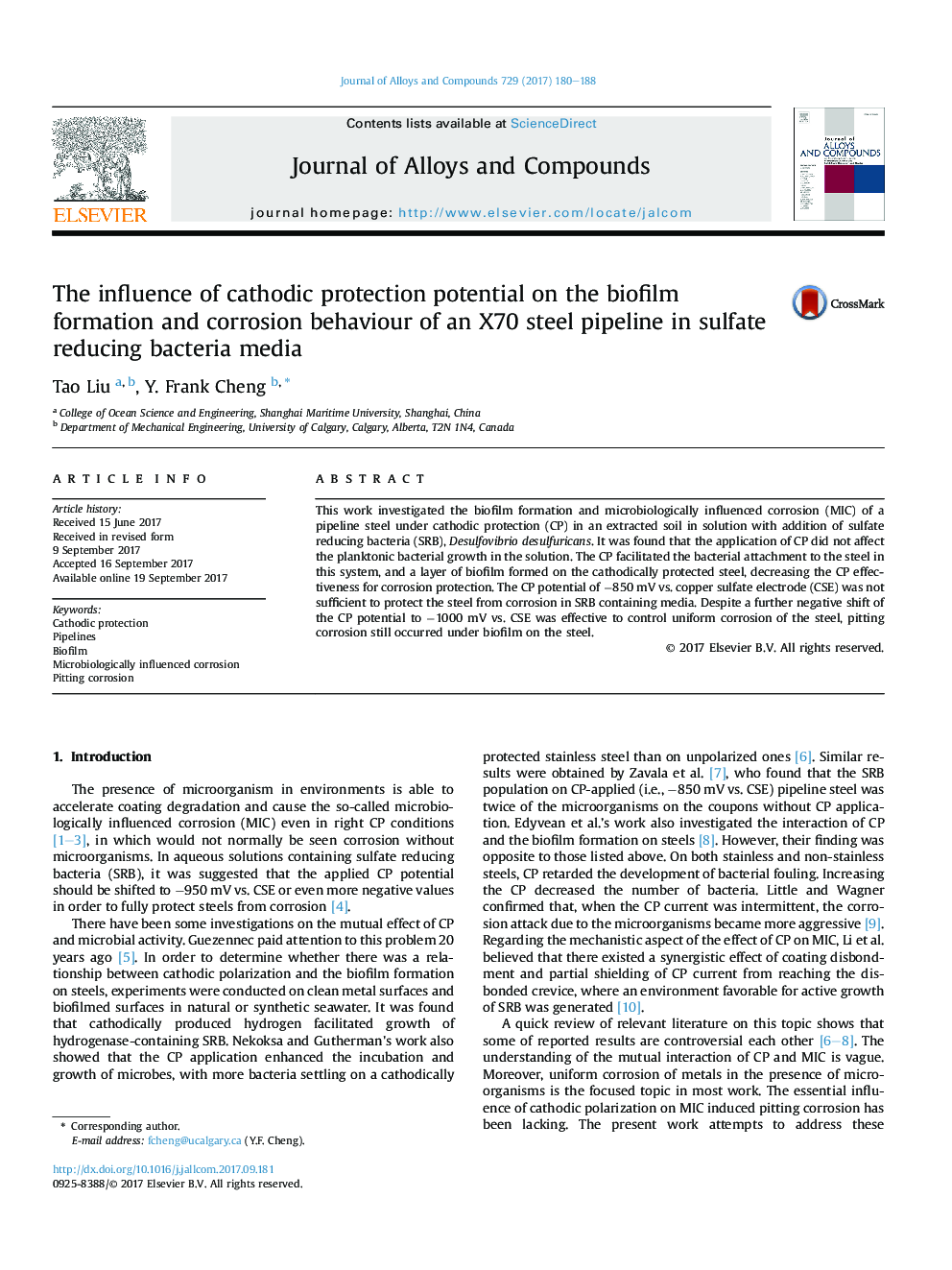| Article ID | Journal | Published Year | Pages | File Type |
|---|---|---|---|---|
| 5458235 | Journal of Alloys and Compounds | 2017 | 9 Pages |
Abstract
This work investigated the biofilm formation and microbiologically influenced corrosion (MIC) of a pipeline steel under cathodic protection (CP) in an extracted soil in solution with addition of sulfate reducing bacteria (SRB), Desulfovibrio desulfuricans. It was found that the application of CP did not affect the planktonic bacterial growth in the solution. The CP facilitated the bacterial attachment to the steel in this system, and a layer of biofilm formed on the cathodically protected steel, decreasing the CP effectiveness for corrosion protection. The CP potential of â850 mV vs. copper sulfate electrode (CSE) was not sufficient to protect the steel from corrosion in SRB containing media. Despite a further negative shift of the CP potential to â1000 mV vs. CSE was effective to control uniform corrosion of the steel, pitting corrosion still occurred under biofilm on the steel.
Related Topics
Physical Sciences and Engineering
Materials Science
Metals and Alloys
Authors
Tao Liu, Y. Frank Cheng,
